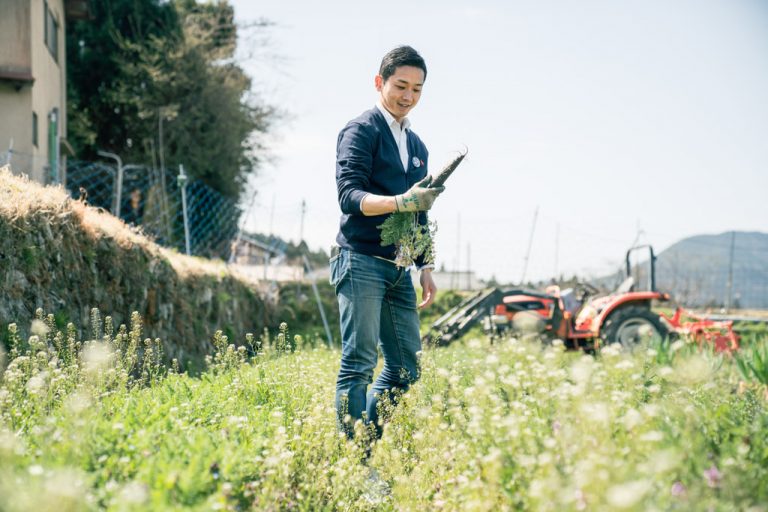
Content Partner
TSUMUGINO KYOTO is a website and magazine dedicated to the millennium-old city of Kyoto embarking on the next 1000 years of sustainable development.
Content Partner

TSUMUGINO KYOTO is a website and magazine dedicated to the millennium-old city of Kyoto embarking on the next 1000 years of sustainable development.
Atsushi Nakahigashi said this as he vigorously pulled out a carrot plant. We were in Ohara, at Tsukuda Farm, run by the owners who are both his friends and business partners. While interviewing him, I saw him beam the moment he sensed the weight of the freshly picked vegetables. This weight was something more than mere mass. He looked like he was in love.
This is an interview between and Atsushi Nakahigashi, a globally-oriented culinary director who founded One Rice One Soup Inc. in 2015, and TSUMUGINO KYOTO Editor-in-Chief Ueyama.
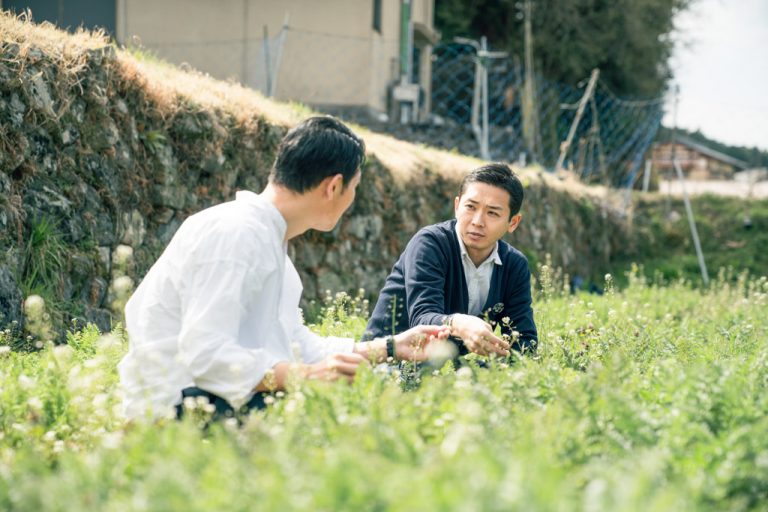
What you said about your college days and veganism was interesting. But all in all, do you suppose we could say that vegan and vegetarian cuisine like Buddhist cuisine is more common overseas than in Japan?
Atsushi Nakahigashi (hereafter “Atsushi”):
Well, there’s a great variety within vegetarian or Buddhist cooking. Some cooks use bonito broth and still call it Buddhist vegetarian cooking, while others strictly reject even garlic or scallions. At my place, we also serve meat and fish; we want to make simple and delicious food, putting complicated thoughts aside. We incorporate, if anything, the spirit of Buddhist cooking by not wasting the skin or the fruit, the roots or the leaves, not even the flowers. This is the spirit of gratitude to food. Besides, it is generally nutritious to eat a whole thing, rather than just certain parts of it. I think this was an approach that had been passed down over generations among people of Kyoto.
Ueyama:
I see. That is a cool way to eat; you have a fundamental approach about food that big words such as “Sustainable Development Goals” are unnecessary to explain. In this magazine, I want to focus on inspiring eating styles. This is because I think that there is no need to impose pedantic explanations when you could do as much by showing what is awesome and beautiful; people are naturally attracted to it. By the way, I think that the criteria for “delicious” too are slowly shifting.
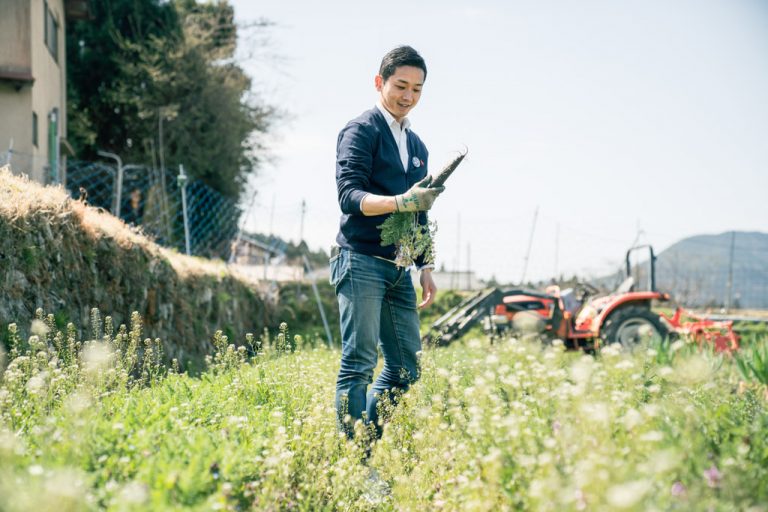
How is that?
Ueyama:
I thought what you said earlier about “eating whole” was awesome. It was like you were embracing it all with both the good parts and the bad parts together. And I think food is more delicious when you are involved in the production of ingredients. As a personal example, vegetables that I picked together with my son were very good. Touching the soil, breaking sweat, and getting hungry—these are the best seasonings you can put on food. Now, this doesn’t mean that I want to work in the fields until my legs and back start to scream. But you can feel contented and live in the present by experiencing one part of that process and realizing how hard the farmers work. In other words, you become mindful. I think we actually do eat with our minds, with the mind’s sense of taste—something that comes next to “umami.” You can satisfy both your stomach and your mind by eating the “whole” that includes a story that reaches the heart.

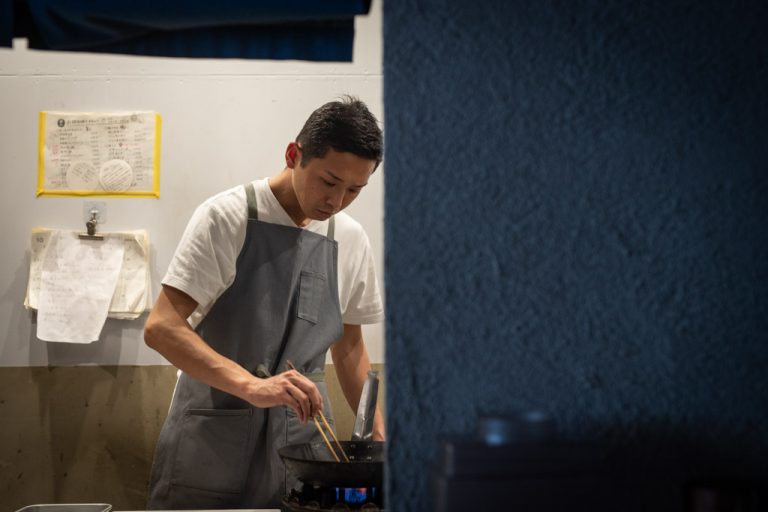
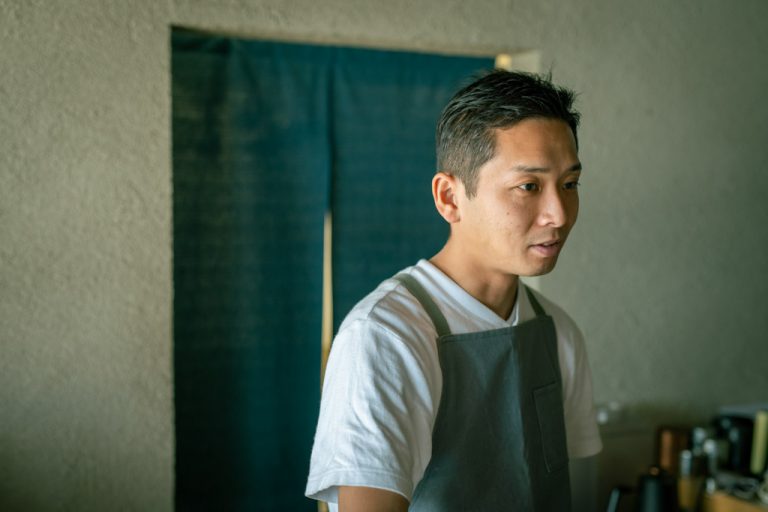
Yes. I try to share even the minute details, so that they could be passed on to future generations. On top of that, I ask them to think on their own …. I think that there is something like a passion that fades, or is not present, in what we could learn by reading things in textbooks or on the Internet. I think it is the duty of professional cooks and culinary directors to use bits of specialized knowledge or ideas as vessels to transmit what you cannot learn from the shelves of the supermarket. In particular, restaurants are focal points of culture. They are spaces packed with culture—not just of dining, but also of vegetable farming, livestock farming, handicrafts, and even tea ceremony and flower arrangement. I hope we can continue to create and pass on such spaces for the next millennium.
Posted on March 30, 2021
Read more article on Partner’s site

Language: Japanese
http://tsumugino.life/TSUMUGINO KYOTO is a website and magazine dedicated to the millennium-old city of Kyoto embarking on the next 1000 years of sustainable development.


